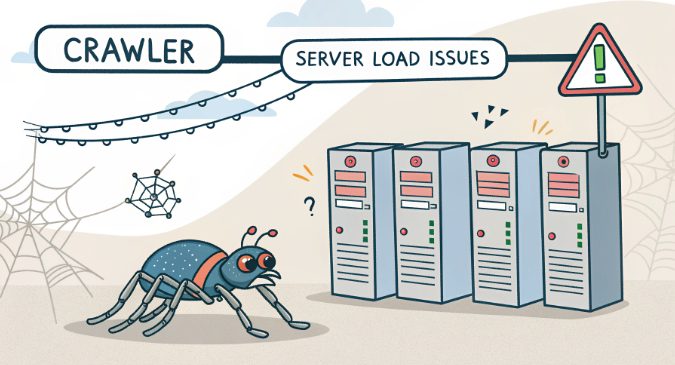What Is a Crawler and Why Does It Cause Server Load Issues?

In the realm of Hong Kong hosting infrastructure, web crawlers and server load management have become critical concerns for tech professionals. As automated scripts continuously traverse the web, understanding their impact on server performance is crucial for maintaining optimal infrastructure health. This deep dive explores the intricate relationship between web crawlers and server resources, particularly focusing on CPU utilization patterns.
Understanding Web Crawlers: Beyond the Basics
At their core, web crawlers are sophisticated pieces of software that systematically browse and index the internet. However, their complexity extends far beyond simple web scraping:
- Search Engine Crawlers (e.g., Googlebot, Bingbot): Systematic indexing bots that follow specific protocols
- Data Mining Crawlers: Custom scripts designed for targeted information extraction
- Monitoring Crawlers: Automated tools checking website availability and performance
- Research Crawlers: Academic and research-oriented bots collecting specific datasets
Technical Anatomy of Server Load Spikes
When examining server performance metrics, crawler-induced load spikes exhibit distinct patterns:
- CPU Thread Saturation: Multiple concurrent requests forcing thread pool expansion
- I/O Wait States: Increased disk activity from rapid file access requests
- Memory Buffer Overflow: Cache saturation from repeated content requests
- Network Socket Exhaustion: TCP connection pool depletion
Hong Kong Server Infrastructure: Unique Challenges
Hong Kong’s strategic position in the global internet infrastructure presents specific considerations:
- Geographic Advantage: Proximity to major Asian markets attracts increased crawler activity
- Network Density: High concentration of data centers intensifies crawler traffic
- Cross-border Traffic: Complex routing patterns affecting crawler behavior
- Regulatory Compliance: Specific data protection requirements influencing crawler management
Identifying Malicious Crawler Patterns
Implementing advanced detection mechanisms requires understanding sophisticated crawler behavioral patterns. Here’s a technical breakdown of identification methodologies:
- Request Pattern Analysis:
- Non-standard User-Agent strings
- Irregular HTTP header configurations
- Abnormal request timing intervals
- Suspicious IP rotation patterns
- Resource Consumption Metrics:
- Exponential growth in concurrent connections
- Disproportionate bandwidth utilization
- Database connection pool exhaustion
- Session handling anomalies
Technical Deep Dive: Load Analysis
Understanding server load metrics requires examining multiple system-level indicators:
- CPU Load Average Analysis:
- 1-minute load average > 0.7 × core count
- 5-minute load average trending patterns
- Process scheduling queue depth
- Context switching frequency spikes
- Memory Utilization Patterns:
- Page fault frequency analysis
- Swap space utilization trends
- Buffer cache saturation levels
- Memory fragmentation indicators
Advanced Mitigation Strategies
Implementing robust crawler management requires a multi-layered approach:
- Rate Limiting Implementation:
- Token bucket algorithm deployment
- Dynamic rate adjustment based on server load
- IP-based throttling mechanisms
- Request pattern-based restrictions
- Infrastructure Optimization:
- Load balancer configuration fine-tuning
- Cache hierarchy optimization
- Database connection pooling strategies
- Network stack parameter optimization
Implementing Intelligent Crawler Management
For Hong Kong hosting environments, deploying sophisticated crawler management systems requires precise configuration:
- robots.txt Optimization:
“`
User-agent: *
Crawl-delay: 5
Request-rate: 1/5
“` - Advanced Configuration Parameters:
- Crawl-delay directives based on User-Agent
- Resource-specific access patterns
- Conditional rate limiting rules
- Automated IP classification systems
Performance Monitoring Framework
Establishing comprehensive monitoring systems is crucial for maintaining optimal server performance:
- Real-time Metrics:
- CPU utilization heat maps
- Memory allocation patterns
- Network throughput analysis
- I/O operations per second (IOPS)
- Alert Thresholds:
- Load average > 80% sustained for 5 minutes
- Memory utilization exceeding 90%
- Network saturation indicators
- Abnormal request pattern detection
Future-Proofing Your Infrastructure
Looking ahead, several emerging technologies and methodologies are reshaping crawler management:
- Machine Learning Integration:
- Behavioral pattern recognition
- Predictive load analysis
- Automated response systems
- Adaptive rate limiting
- Infrastructure Evolution:
- Container-based isolation
- Microservices architecture adaptation
- Edge computing implementation
- Serverless computing integration
Conclusion
Managing web crawlers in Hong Kong’s hosting environment requires a delicate balance between accessibility and resource protection. By implementing sophisticated detection mechanisms, robust rate limiting, and advanced monitoring systems, organizations can maintain optimal server performance while accommodating legitimate crawler traffic. The key lies in continuous adaptation and evolution of crawler management strategies, keeping pace with emerging technologies and threats in the hosting landscape.
For technical professionals managing Hong Kong hosting infrastructure, staying ahead of crawler-induced server load challenges requires a comprehensive understanding of both traditional and emerging solutions. By leveraging advanced monitoring tools, implementing intelligent rate limiting, and maintaining optimal server configurations, organizations can ensure robust performance while maximizing the benefits of legitimate web crawler activity.

